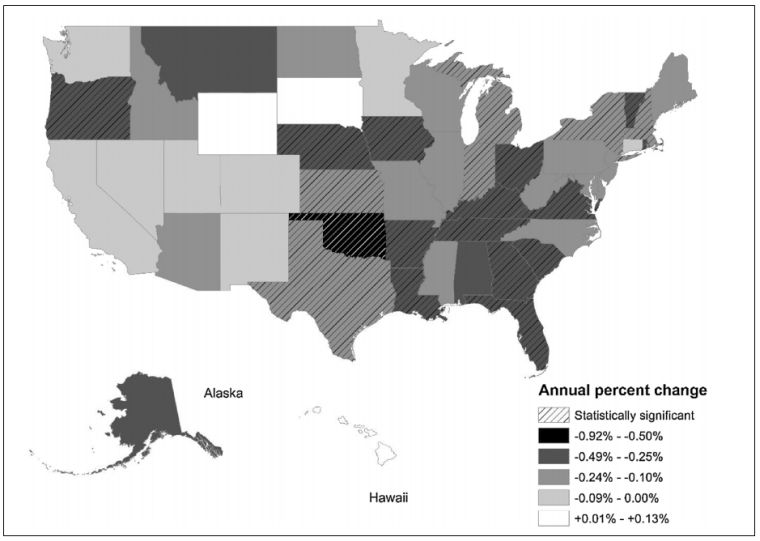Research Shows U.S. Cities Lose Tree Cover Just When They Need It Most: “And it takes a lot more than a few cities with million tree programs to replace the trees that get chewed up by office buildings and big box stores and parking lots,” stated William Sullivan, professor of landscape architecture
Note to Reader:
A study in the May 2018 issue of Urban Forestry & Urban Greening reports metropolitan areas in the United States are experiencing a net loss of about 36 million trees nationwide every year. The research was completed by David Nowak and Eric Greenfield of the United States Forest Service. The study highlights are as follows:
- Between c. 2009-2014, US urban tree cover dropped from 40.4% to 39.4%.
- During that same period, US urban impervious cover increased from 25.6% to 26.6%.
- Nationally, annual urban/community tree cover loss is 175,000 acres or 36 million trees.
- Loss of urban forest benefits is conservatively estimated at $96 million per year.
The economic calculation involves several such benefits that are relatively easy to express in dollar terms—the capacity of trees to remove air pollution, sequester carbon, conserve energy by shading buildings and reduce power plant emissions.

Research by US Forest Service demonstrates declining urban and community tree cover in the United States
“Scientific evidence that trees and green spaces are crucial to the well-being of people in urban areas has multiplied in recent decades,” wrote Richard Conniff in an article published in Scientific American.
 “Conveniently, these findings have emerged just as Americans, already among the most urbanized people in the world, are increasingly choosing to live in cities. The problem—partly as a result of that choice—is that urban tree cover is now steadily declining across the U.S.”
“Conveniently, these findings have emerged just as Americans, already among the most urbanized people in the world, are increasingly choosing to live in cities. The problem—partly as a result of that choice—is that urban tree cover is now steadily declining across the U.S.”
Urban Forestry & Urban Greening
Paired aerial photographs were interpreted to assess recent changes (c. 2009–2014) in tree, impervious and other cover types within urban/community and urban land in all 50 United States and the District of Columbia.
Overall, for both urban and the broader urban/community areas, 23 states/districts had statistically significant declines in tree cover, 25 states had non-significant decreases or no change in tree cover, and three states showed a non-significant increase in tree cover.
The most intensive change occurred within urban areas, with tree cover in these areas dropping one percent over the 5-year period, compared to a 0.7 percent drop in urban/community areas.
Coinciding with the loss of tree cover was a gain in impervious cover, with impervious cover increasing 0.6 percent in urban/community areas and 1.0 percent in urban areas over the 5-year period. Such changes in cover types affect the benefits derived from urban forests and consequently the health and well-being of urban residents.
Now What?
“Urban tree planting programs—even the heavily promoted ‘million tree’ campaigns taking place in many U.S. cities—have not kept up with losses,” wrote John Conniff.
“Adding tree cover will, however, require a shift to long-term thinking—especially to plan ways to make room for nature while also accommodating new growth,” he added.
“We’re urbanizing like crazy,” says William Sullivan, head of the University of Illinois at Urbana–Champaign Landscape Architecture department, who studies the effect of tree cover on urban crime and was not involved in the new study. “And it takes a lot more than a few cities with million tree programs to replace the trees that get chewed up by office buildings and big box stores and  parking lots.”
parking lots.”
“Living well in an increasingly urbanized world, he adds, will require ‘nature at every doorstep. It’s not enough to have a phenomenal world-class park three miles from your home. It’s not enough to have these incredible national parks five states away.’ A tree needs to grow, he says, outside every window and doorway.”
To Learn More:
Download a PDF copy of U.S. Cities Lose Tree Cover Just When They Need It Most, an article published by Scientific American.

